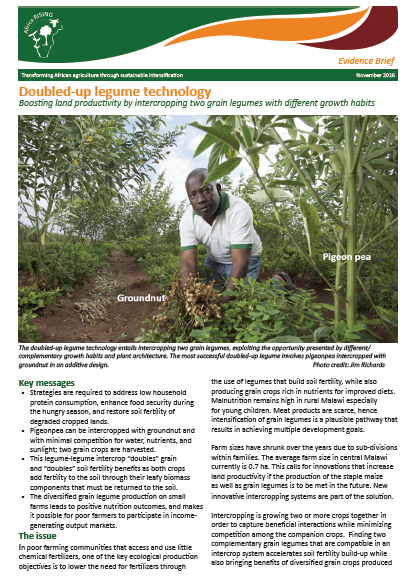Boosting land productivity using ‘doubled-up’ legume intercropping in Malawi
 In poor farming communities with limited access to, and use of, chemical fertilizers, one of the key ecological production goals focuses on growing legumes that build soil fertility, while also producing nutrient-rich grain that improve diets.
In poor farming communities with limited access to, and use of, chemical fertilizers, one of the key ecological production goals focuses on growing legumes that build soil fertility, while also producing nutrient-rich grain that improve diets.
Malnutrition remains high in rural Malawi especially for young children. Meat products are scarce, hence intensification of grain legumes is a plausible pathway that results in achieving multiple development goals.
Farm sizes have shrunk over the years due to sub-divisions within families. The average farm size in central Malawi currently is 0.7 ha. This calls for innovations that increase land productivity if the production of the staple maize as well as grain legumes is to be met in the future. New innovative intercropping systems are part of the solution.
This evidence brief explains how Africa RISING is using an intercropping system known as ‘doubled-up’ legume technology using two complimentary grain legumes. Groundnut–pigeon pea intercropping is the most successful doubled-up system thanks to the two crops’ contrasting structures and maturity dates.
Download the evidence brief or read it here.




